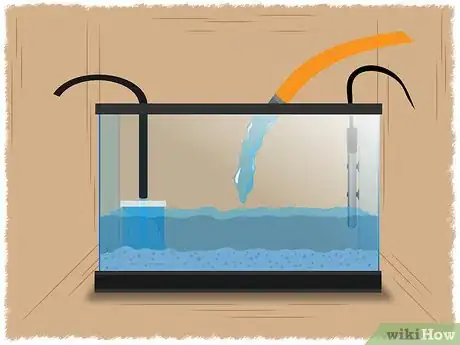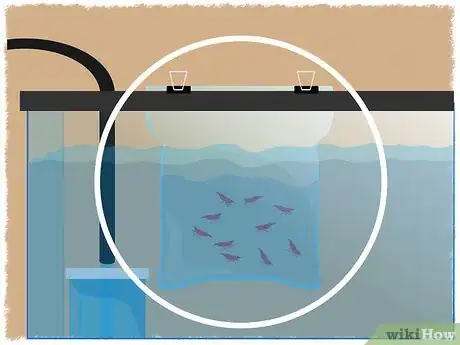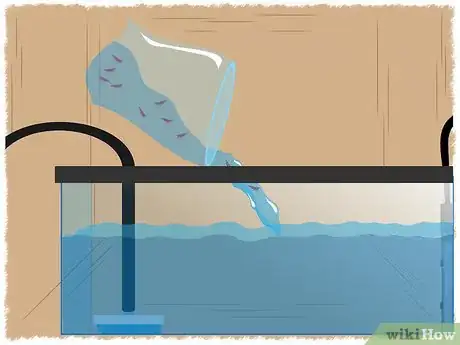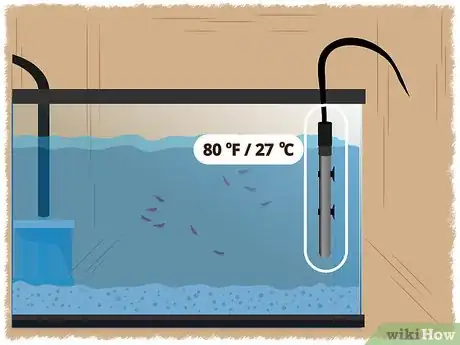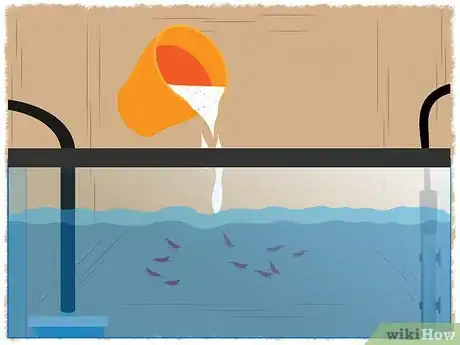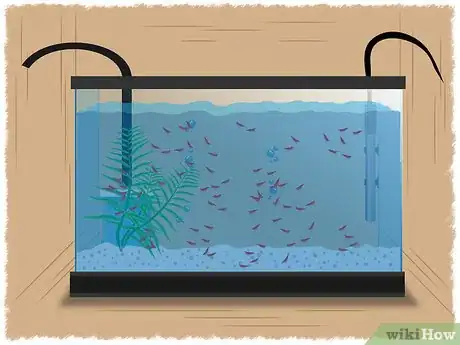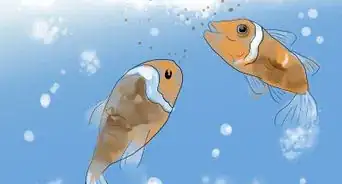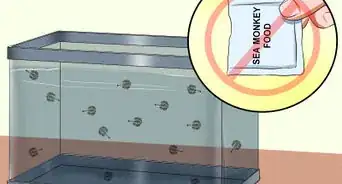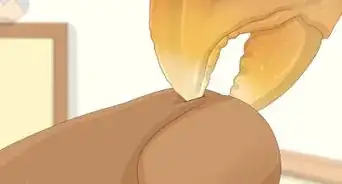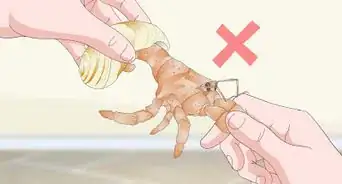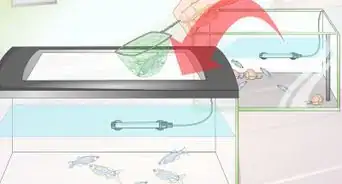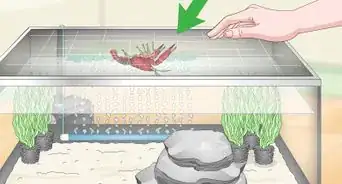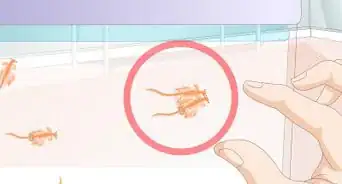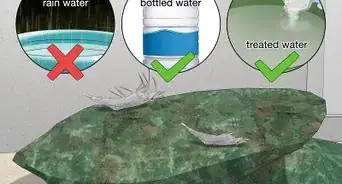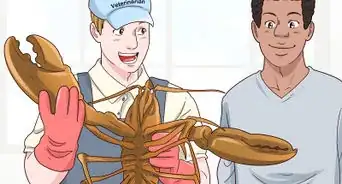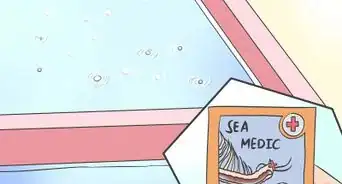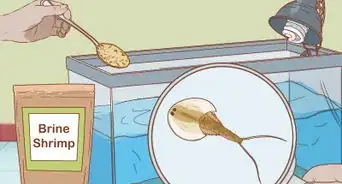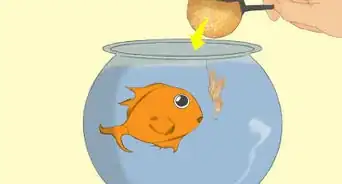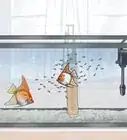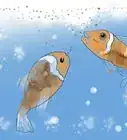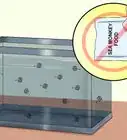wikiHow is a “wiki,” similar to Wikipedia, which means that many of our articles are co-written by multiple authors. To create this article, 40 people, some anonymous, worked to edit and improve it over time.
wikiHow marks an article as reader-approved once it receives enough positive feedback. This article received 11 testimonials and 93% of readers who voted found it helpful, earning it our reader-approved status.
This article has been viewed 580,665 times.
Learn more...
Hoping to set up a home aquarium? Red Cherry Shrimp (RCS) could be some great new friends to keep and breed at home. Although RCS can reach up to 1.5 inches (4cm) in length in adulthood, these low-maintenance critters don't need any special tanks, foods, dances, or shamans to breed. We'll walk you through everything you need to know, so you can start breeding your RCS in no time.
Steps
Community Q&A
-
QuestionHow long does it take for an RCS to mature into an adult?
 Community AnswerIt takes about three months for a shrimp to mature into an adult capable of reproducing itself.
Community AnswerIt takes about three months for a shrimp to mature into an adult capable of reproducing itself. -
QuestionI have a 50 gallon aquarium and an explosion of cherry shrimp. Do they inbreed?
 CaeiiaTop AnswererYes, they will breed with each other. But if you have enough in there (you can add more too), it's not a problem. Inbreeding usually isn't going to produce horrid results in shrimp.
CaeiiaTop AnswererYes, they will breed with each other. But if you have enough in there (you can add more too), it's not a problem. Inbreeding usually isn't going to produce horrid results in shrimp. -
QuestionHow do I keep the nitrate levels down?
 Community AnswerHave plants in your aquarium, and change about 20% of your water. You can also purchase products to help rid of ammonia, nitrites, and nitrates. And do not put too much food in the tank, only what your water pets consume. Otherwise, left over food turns into ammonia, ammonia into nitrite, and nitrite into nitrate*. *Nitrate isn't as harmful as ammonia and nitrite.
Community AnswerHave plants in your aquarium, and change about 20% of your water. You can also purchase products to help rid of ammonia, nitrites, and nitrates. And do not put too much food in the tank, only what your water pets consume. Otherwise, left over food turns into ammonia, ammonia into nitrite, and nitrite into nitrate*. *Nitrate isn't as harmful as ammonia and nitrite.
Warnings
- Cardinal tetras will harm RCS babies.⧼thumbs_response⧽
- Do not remove any empty shells of molted shrimp. Many will consume this to get back valuable minerals.⧼thumbs_response⧽
- Shrimp in general are sensitive to, and can be killed by chloramines, chlorine, ammonia, nitrites, and high nitrates. Make sure your water dechlorinator takes care of chlorine and chloramines.⧼thumbs_response⧽
- Many fish will eat adult shrimp, as well as baby shrimp. Any type of catfish, predator fish, angelfish, oscars, clown loaches, or eels will eat shrimp. If you have lots of cover, more babies will survive. Java moss makes excellent cover and forage.⧼thumbs_response⧽
- Uncoated heavy metals like zinc, lead (from plant weights) and elemental copper will kill shrimp, especially copper. If a tank has ever had elemental copper in it, you will have a hard time keeping shrimp alive. Copper sulfate in fish foods is safe as it is a copper compound in low amounts. The dangerous stuff is elemental copper (copper metal). The copper compound found in snail killing concoctions is toxic to shrimp and inverts because it is so concentrated.⧼thumbs_response⧽
- Adult RCS are safe with guppies, mollies, platies, porkchop rasboras, or any fish too small to eat the shrimp.⧼thumbs_response⧽
- Some copper compounds seem to be safe for shrimp. For example, tiny amounts of copper sulfate are commonly used as a preservative in almost all fish food. It is safe to feed shrimp the food with copper sulfate since it is not elemental copper.⧼thumbs_response⧽
- Despite a persistent myth, an iodine supplement is not needed for freshwater crustaceans. There is no scientific support that freshwater shrimp use iodine in the water column. They get enough iodine from their food. Saltwater crustaceans MAY have a need for supplemental iodine.⧼thumbs_response⧽
- If your tank isn't cycled well, you may be forced to perform water changes frequently. This can up the chance of you sucking up tiny shrimp babies.⧼thumbs_response⧽
- Never keep betta with any kind of shrimps. They will eat the RCS.⧼thumbs_response⧽



